Wat Burapha Phiram
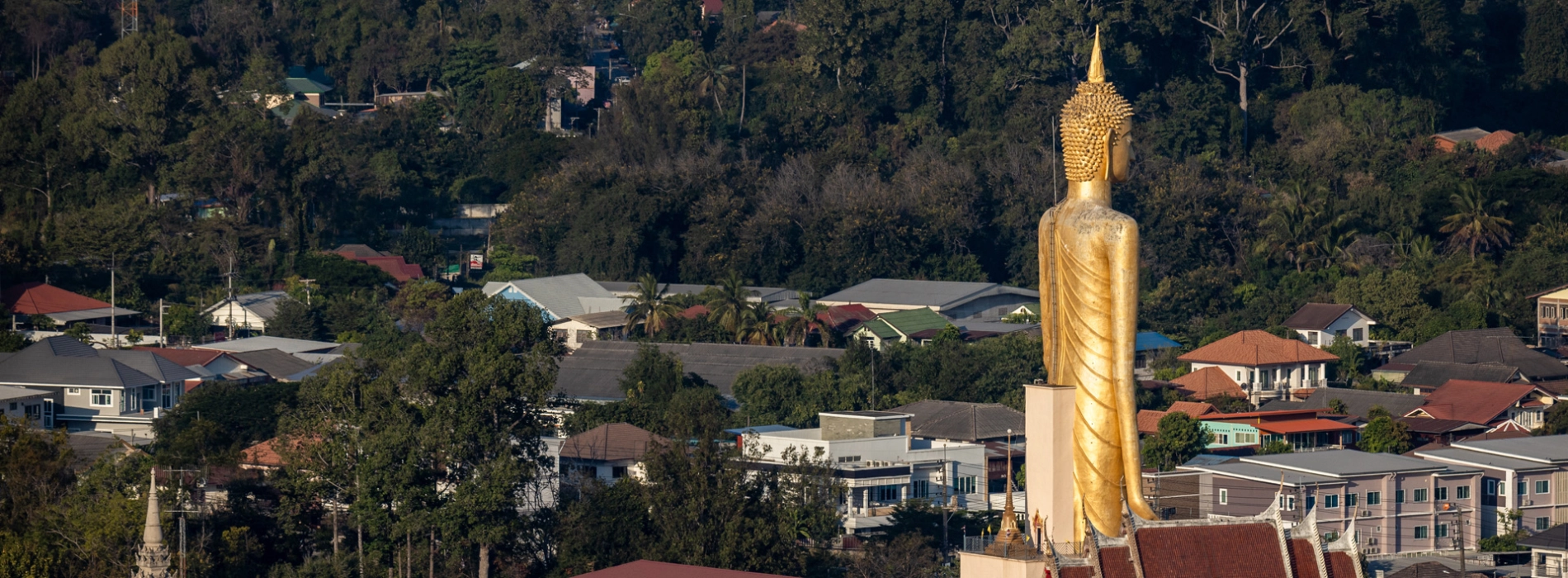
Wat Burapha Phiram, located in Roi Et Province, Thailand, represents centuries of cultural and religious legacy. Its magnificent architecture, which includes a main hall, bell tower, and pagoda, fascinates tourists. Beyond aesthetics, the temple provides spiritual consolation via Buddhist rites and peaceful environs. As a community hub, it offers festivals and educational programs that improve the local culture. A visit to Wat Burapha Phiram promises a profound experience that combines tradition with modern devotion. Let’s explore this temple with Asia King Travel!
Wat Burapha Phiram, originally known as Wat Hua Ro, was erected in 1913 and subsequently renamed Wat Burapha Phiram because it served as an overnight stop for merchants and people who traveled mostly on foot. Because there is no convenient transportation as there is now, Hua Ro Temple is the beginning point for the first night of the trip and is frequently used as a gathering place.

History of Wat Burapha Phiram
Later, Phra Abbot La Inthaso made the temple bigger. And named the new temple "Wat Burapha" since it is located in the east of the city, but subsequently changed the name to "Wat Burapha Phiram" on the east side of the temple area, which is near to the city's ancient moat. The mission center is located at Pariyattham School, and there is a shrine of Por Mahesak that is honored by the inhabitants of the city beliefs and techniques of devotion.
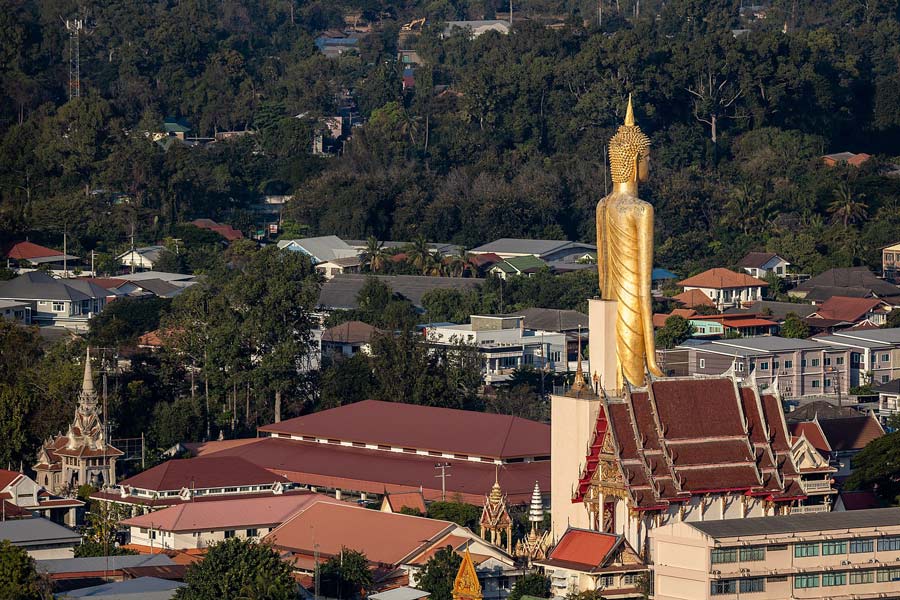
History of Wat Burapha Phiram
Roi Et residents see Phra Chao Yai as a valuable Buddha image who protects them and ensures their peaceful existence. Blissful with the height of the Buddha, leading to the concept that if you come to worship, you will receive merits as high as clouds, artificial sky, and the ability to do anything by any means.
May be you like: Northeast Thailand Tour 8 days - Isaan Discovery
Wat Burapha Phiram is known for its remarkable and original architectural characteristics, which combine traditional Buddhist components with particular local styles. Wat Burapha Phiram's building combines religious symbolism and artistic workmanship in a cohesive manner. Each aspect, from the towering Buddha statue to the intricate carvings, adds to the temple's spiritual importance and esthetic attractiveness.

The architecture of Wat Burapha Phiram
The Main Ordination Hall (Ubosot) The middle building is usually the main ordination hall, also known as the ubosot. This hall is generally used for large religious occasions, such as monk ordinations and other sacred rites. The ubosot at Wat Burapha Phiram has beautiful carvings and bright paintings depicting scenes from Buddhist teachings and Jataka stories, which tell Buddha's former incarnations.
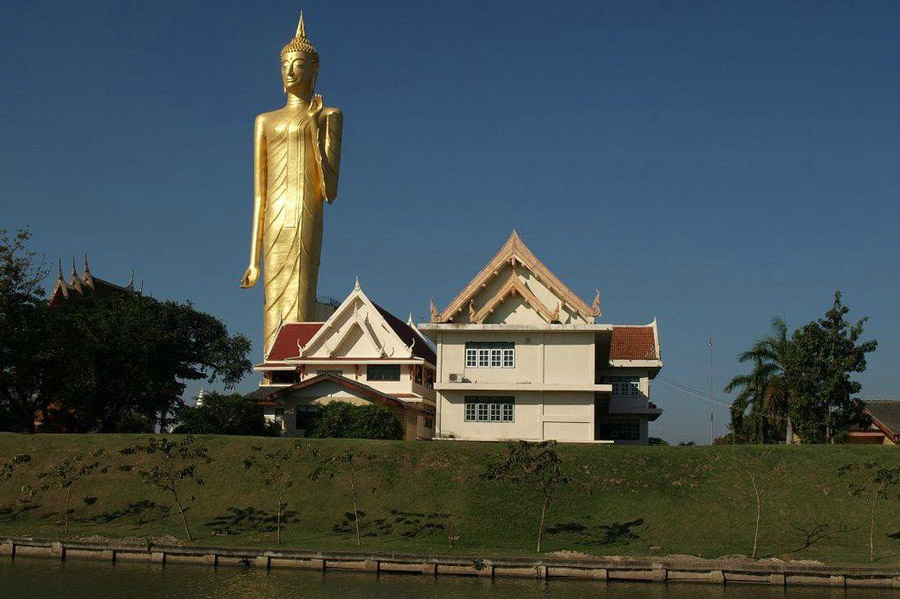
The architecture of Wat Burapha Phiram
Wat Burapha Phiram is known for its enormous reclining Buddha statue. This landmark statue is one of Thailand's tallest, reaching at around 59 meters. It is a prominent landmark visible from a distance, drawing both visitors and believers who come to pay their respects.
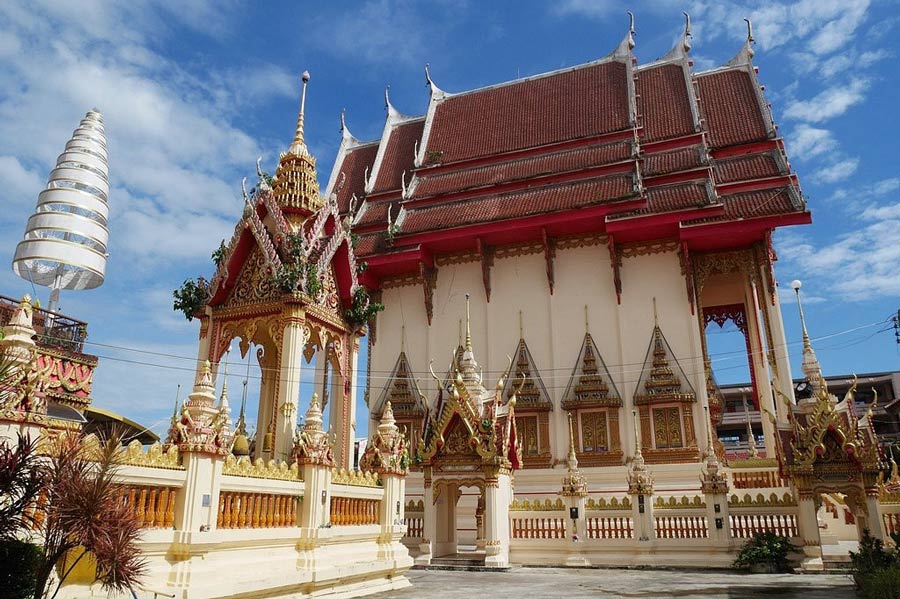
The architecture of Wat Burapha Phiram
Chedi (Pagoda or Stupa): Wat Burapha Phiram, like many Buddhist temples, has a chedi or stupa that represents Buddha's relics or sacred writings. These constructions are often embellished with elaborate gold leaf and ornate carvings, which contribute to the temple's majesty.

The architecture of Wat Burapha Phiram
Decorative Elements: Naga (serpentine monsters), garudas (mythical bird-like creatures), and kinnaree (half-woman, half-bird figures) are prevalent decorations throughout the temple. These elements are symbolic in Buddhist and Thai culture, adding a complex layer of significance to the temple's design.
Wat Burapha Phiram does not generally charge an entrance fee, but it's customary to make a small donation when visiting temples. Other expenses might include guided tours, which can vary in cost.
Additional costs may come from other attractions in Roi Et or nearby areas, as well as souvenirs and other personal purchases.
Opening time: 5am to 7pm daily and CLOSE ON HOLIDAY
The best time to visit Wat Burapha Phiram in Roi Et, Thailand, varies based on weather and personal preferences. November to February, the Cool Season, offers pleasant temperatures (20°C to 30°C) ideal for outdoor exploration, despite higher tourist numbers. The Hot Season (March to May) sees fewer visitors but intense heat, while the Rainy Season (June to October) brings lush greenery but occasional showers. Ultimately, choosing when to visit depends on whether you prefer temperate weather, fewer crowds, or the beauty of the rainy season's landscape.
To get to Wat Burapha Phiram in Roi Et, Thailand, travelers have several options.
When visiting Wat Burapha Phiram, it's important to follow these guidelines:
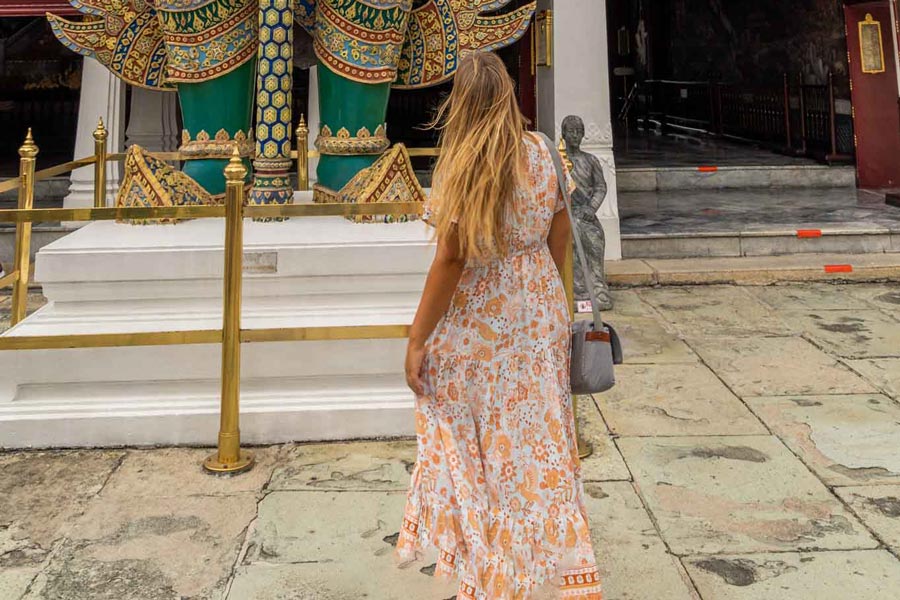
Rules when visiting Wat Burapha Phiram
Read more if you are interested in Northeast Thailand Tours